Abstract
Cuticles were isolated enzymatically from the leaves of two maple species (Acer saccharum Marsh and A. platanoides L.) and from orange (Citrus aurantium L.). The cuticles were placed in a plastic cuvette and different concentrations of KCl were perfused over the physiological inner and outer surfaces while the electrical potential (E10) that developed across the cuticles and was caused by ion diffusion was measured. E10 was always positive, indicating that the permeability of K+ was always greater than that of Cl-. Measured E10 in cuticles did not fit the Goldman equation, whereas, E10 measured during KCl diffusion across selected artificial membranes fit the equation. The magnitude of E10 in cuticles and artificial membranes also was dependent on ionic strength, decreasing as ionic strength increased. These observations are explained by combining classical transport equations with equations that describe the equilibrium ion distribution between ionic double layers in the cuticle or membranes and the bathing solution.
Full text
PDF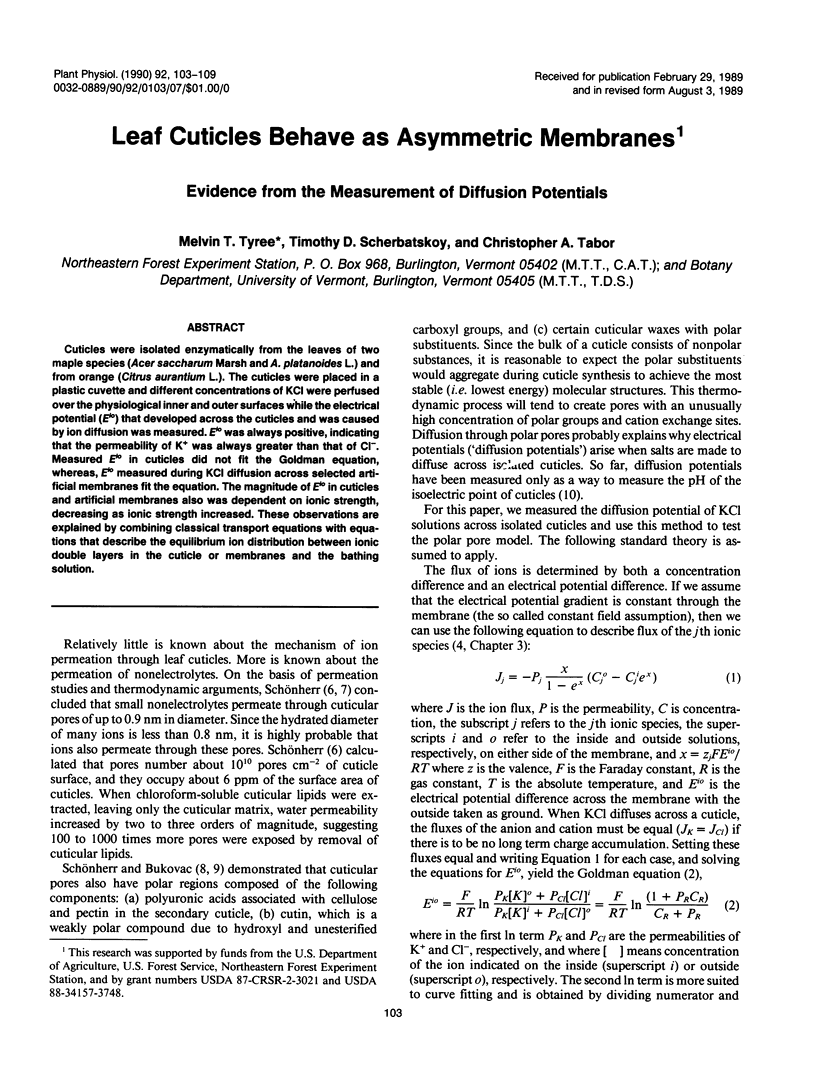
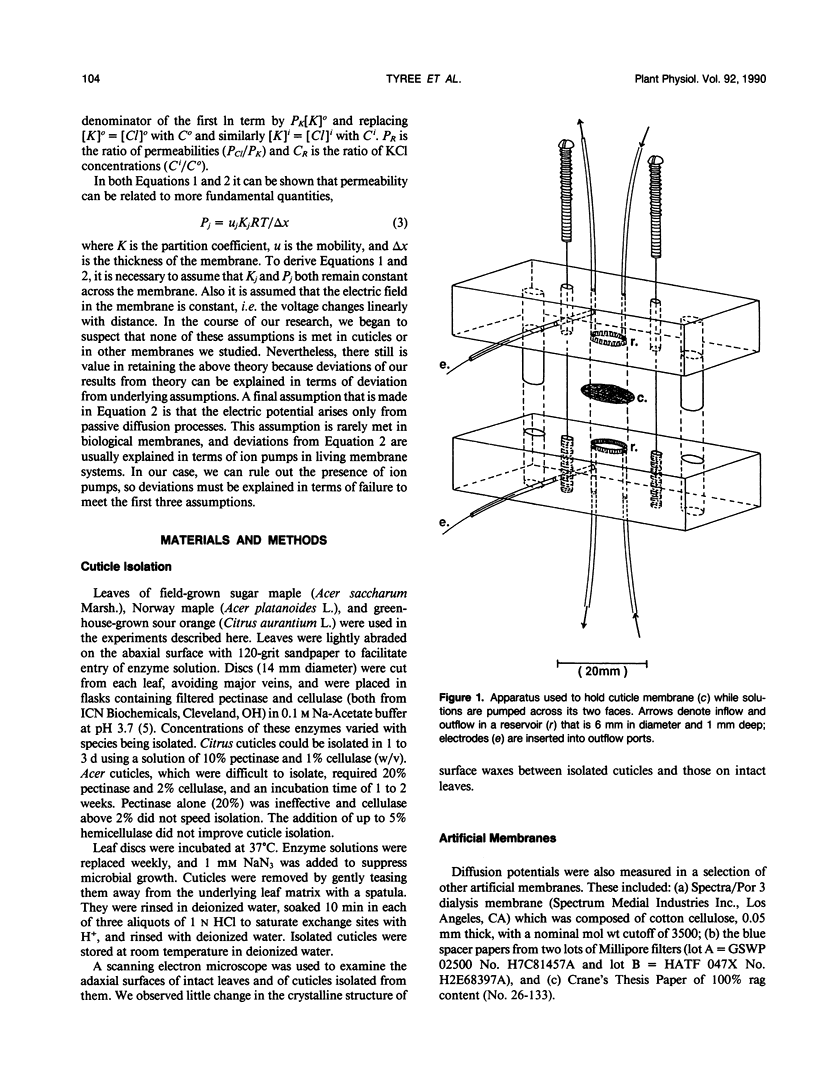
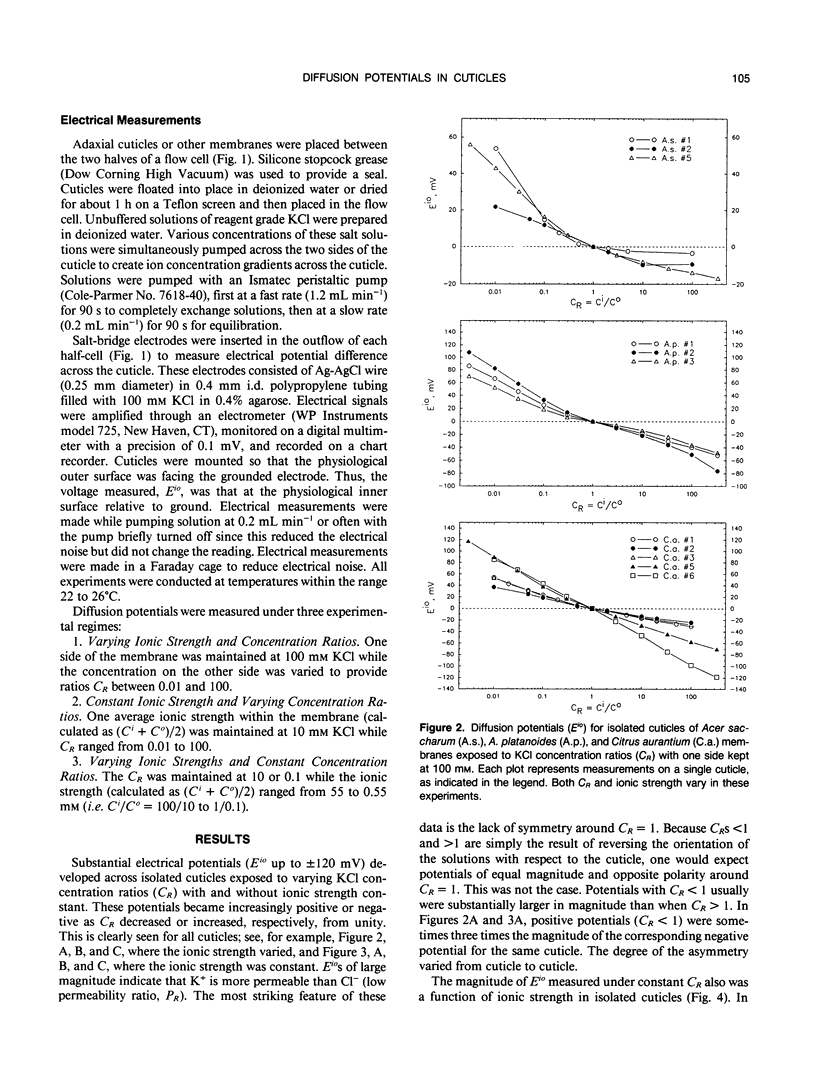
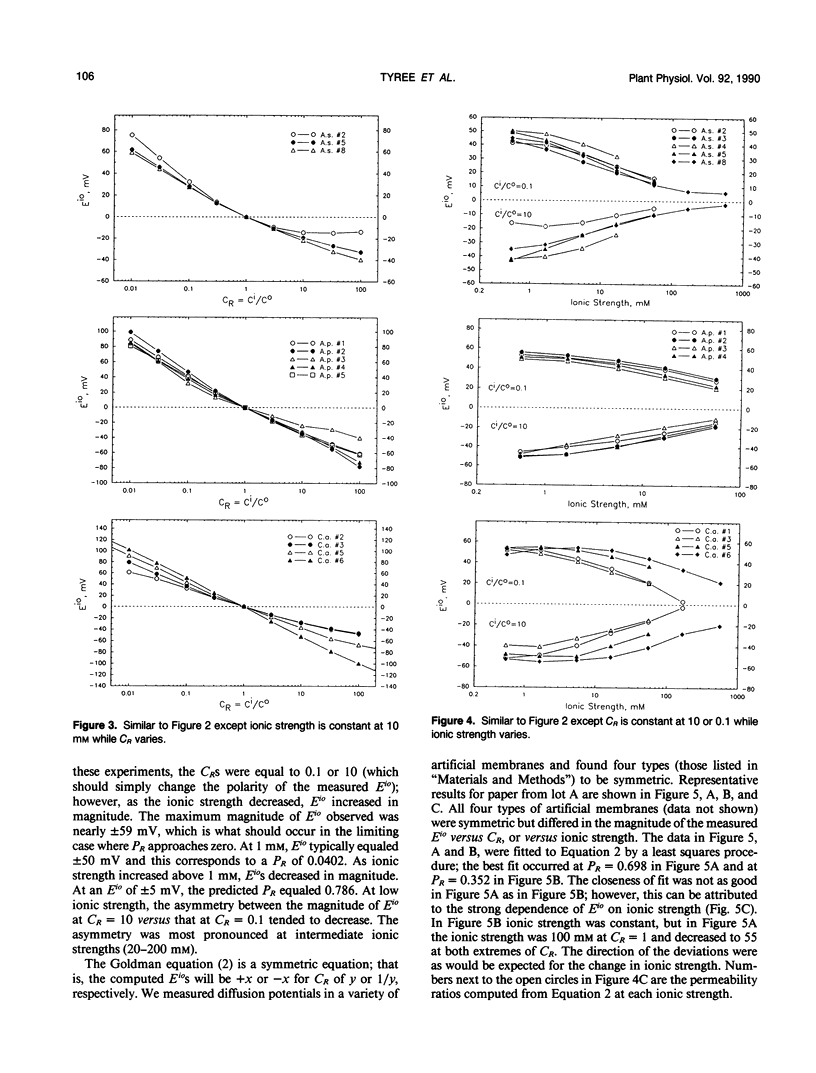
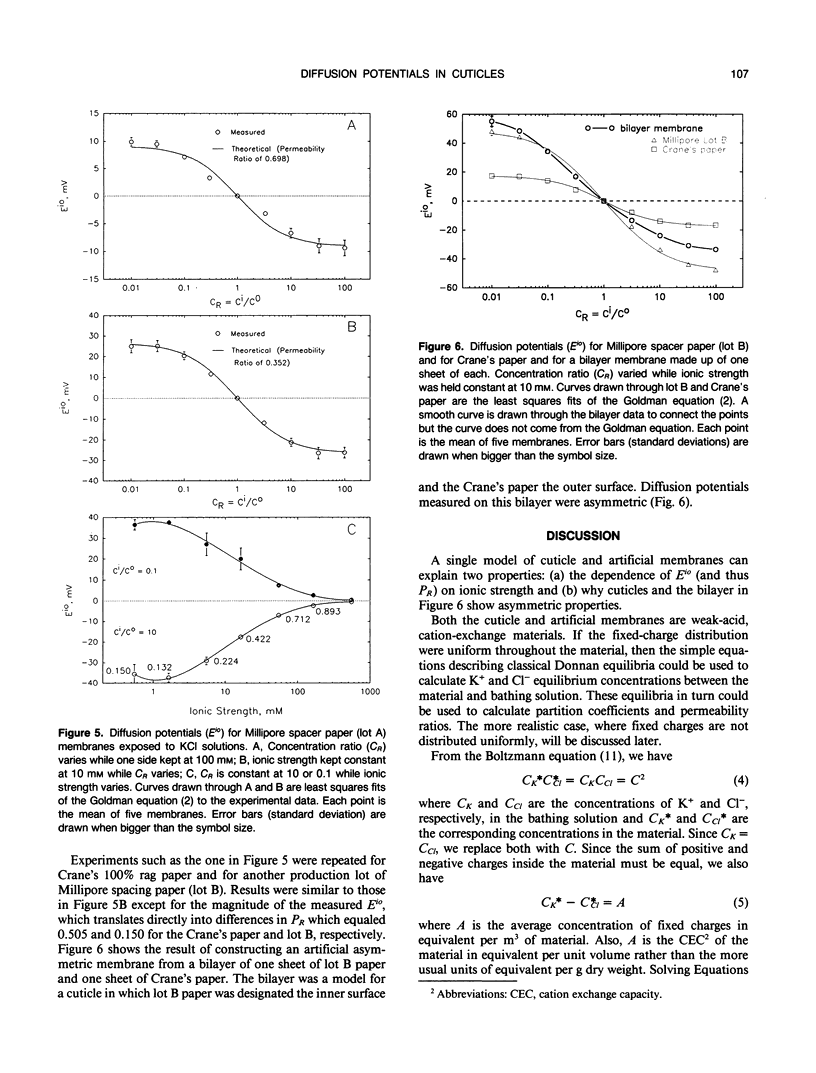
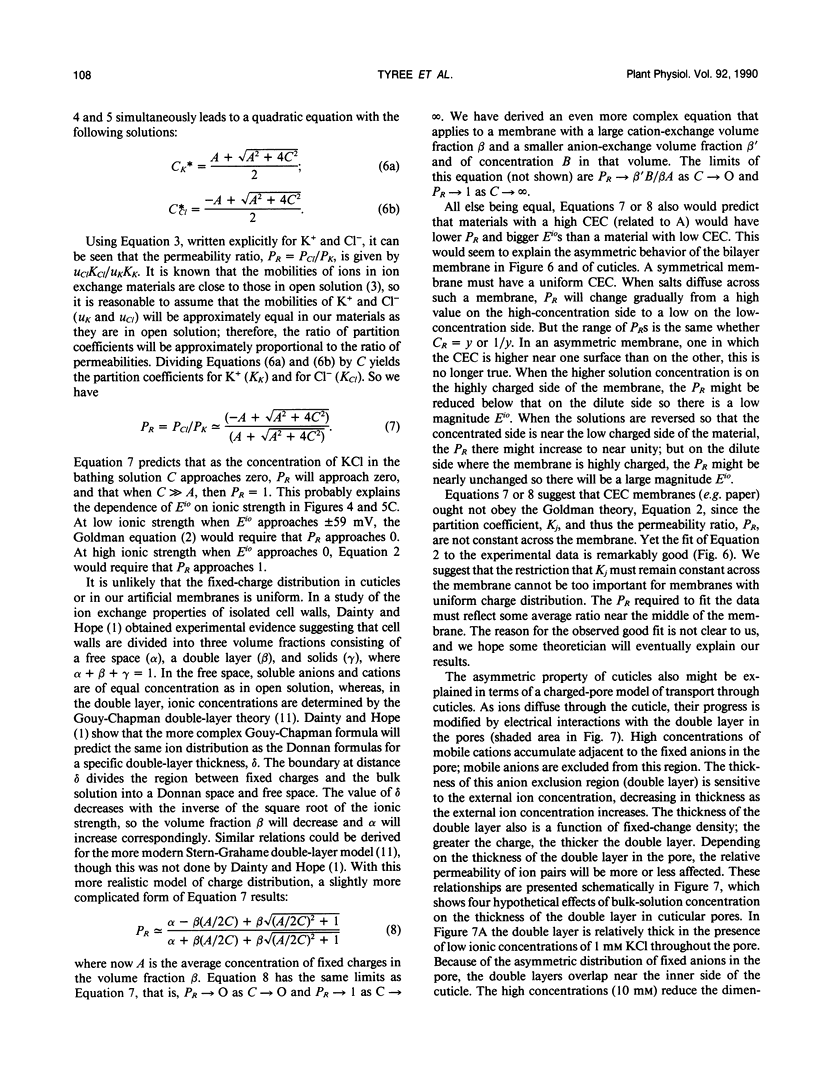
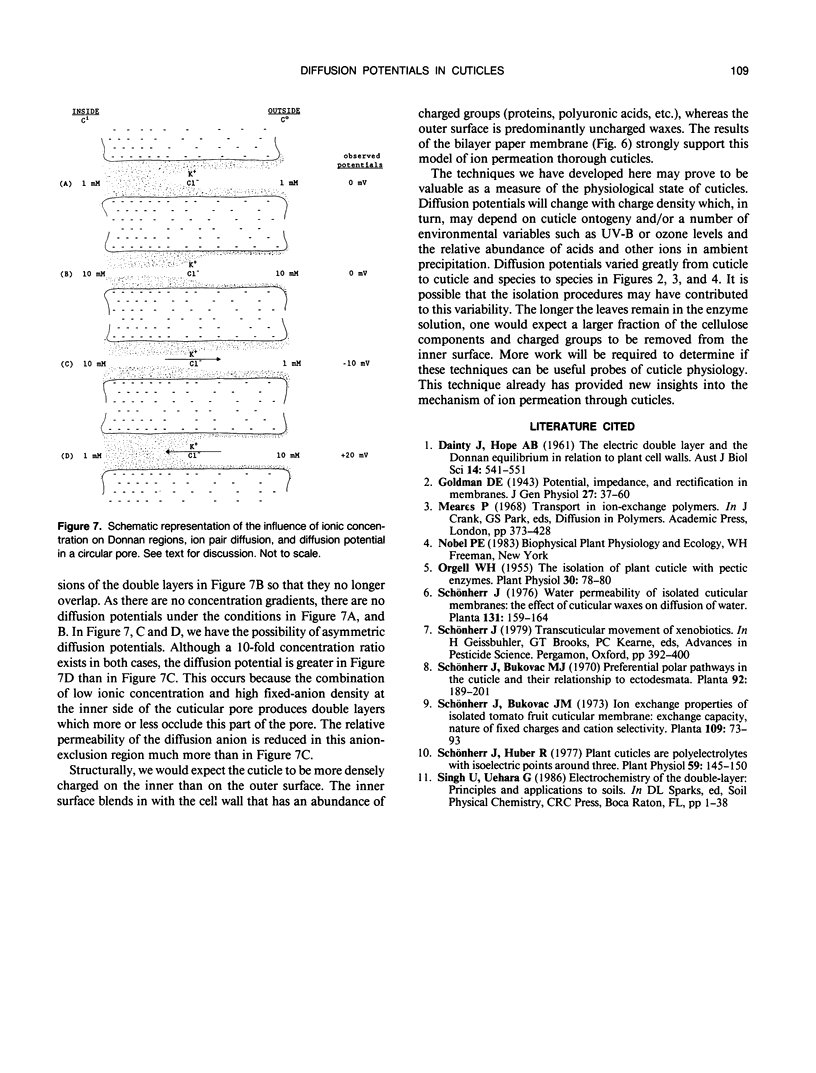
Selected References
These references are in PubMed. This may not be the complete list of references from this article.
- Orgell W. H. The Isolation of Plant Cuticle with Pectic Enzymes. Plant Physiol. 1955 Jan;30(1):78–80. doi: 10.1104/pp.30.1.78. [DOI] [PMC free article] [PubMed] [Google Scholar]
- Schönherr J. Plant Cuticles Are Polyelectrolytes with Isoelectric Points around Three. Plant Physiol. 1977 Feb;59(2):145–150. doi: 10.1104/pp.59.2.145. [DOI] [PMC free article] [PubMed] [Google Scholar]


